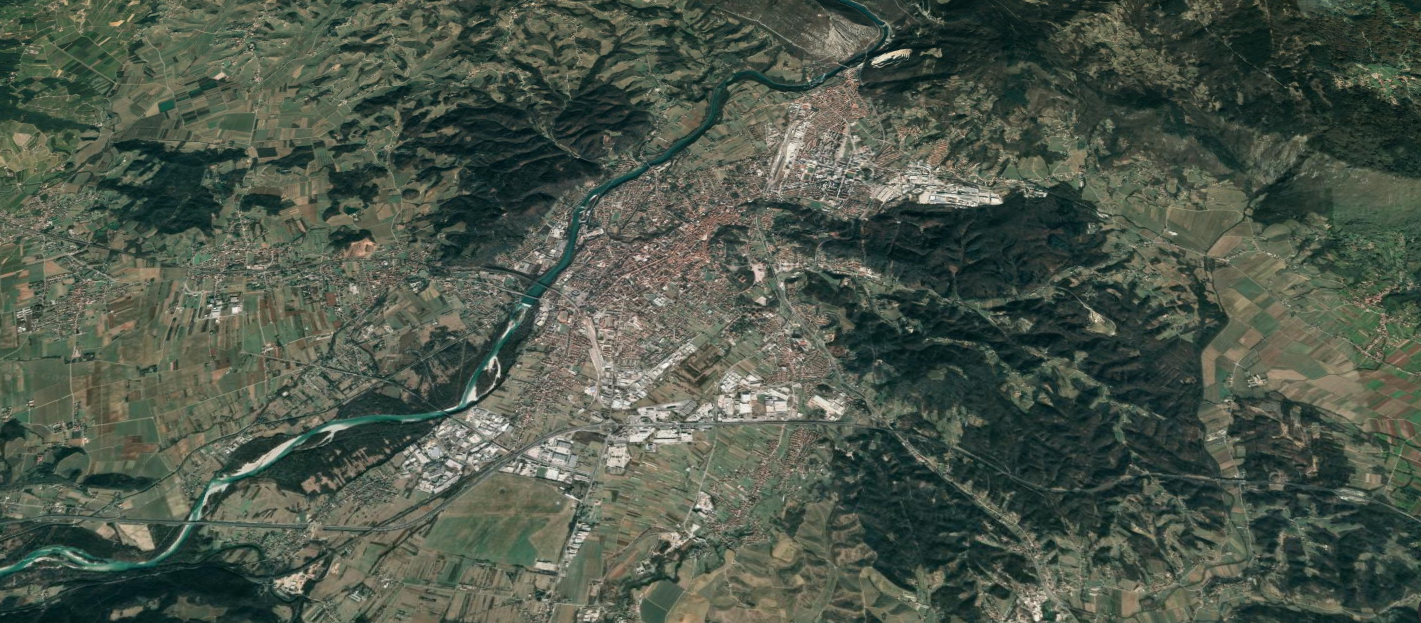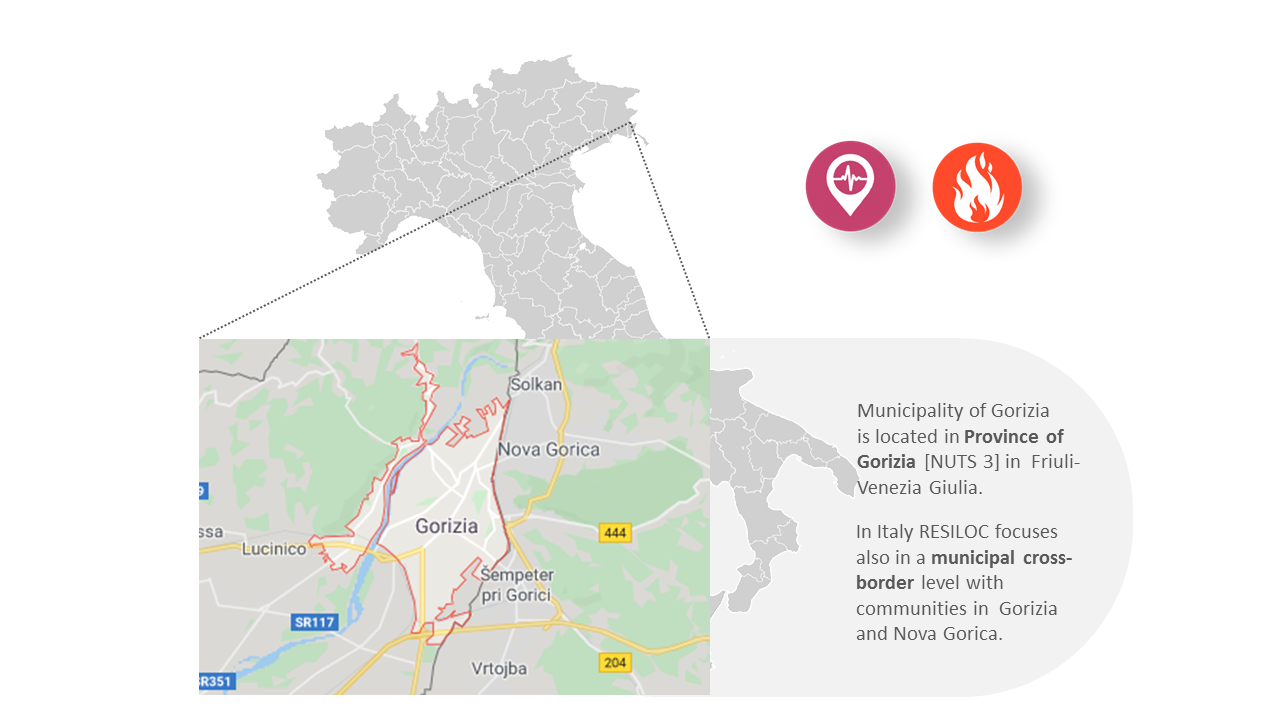RESILOC Community
GORIZIA
PROFILE | COMMUNICATION | PREPAREDNESS

Partner Information:
Gorizia Municipality is located in the North-eastern part of Italy at the very end of the Po Valley, on the slopes of the Julian Alps, 5 km north from the confluence between Isonzo-Soča and Vipacco-Vipava rivers. The Municipality is comprised of the settlements of Lucinico, Madonnina del Fante, Piedimonte, Piuma, Oslavia, San Mauro (on the right bank of the river Isonzo) and Sant’Andrea (on the left bank). In total, 34 350 people are living in Gorizia and with a infrastructure density of 229.7 per sqkm, it is the most urbanised municipality in the region.
Main critical infrastructures in the municipality of Gorizia are the transport network (local roads, streets, highways, bridges, tunnels; airports, heliports, harbours), the electricity network, power plants and transformation stations; the water network; the waste delivery platforms; the oil pipeline, gas and liquid fuel transport networks; the water purification plants.
Due to its special location right next to the border of Slovenia, Gorizia and Nova Gorizia have developed a history of cooperation on several municipal / community issues. Together with a Slovenian Municipality, an European Grouping for Territorial Cooperation was formed in order to support and collaborate on important topics, like resilience.
Hazard Situation
The two main reasons, why this community needs an analysis and improvement of the resilience are the risks of earthquakes and floodings, which occured several times in the past history. Gorizia has a Class 2 risk (out of 4, where 1 is the highest). Another very relevant risk is the hydro-geological risk, which can be determined by the minor water network collapse, which may determine landslides. Additionally, the city faces a hydraulic risk as well (i.e. the risk that a body of water, such as the Isonzo river, could overflow), however it is considered a low-level risk. There are also other relevant risks as well such as wildfires in the adjacent area.

Resilience Stakeholders
The main actors involved in the management of local emergencies are among others:
- Civil Protection Service: The Civil Protection Service is organised within the Municipality of Gorizia and falls under the responsibility of the Mayor and the delegated Councillor. The Municipal Group of Civil Protection in Gorizia is composed of 16 operators and around 50 volunteers. All State powers, including Municipalities, Regions and the Central Government (Civil Protection Department under the Presidency of the Council of Ministers), participate in the Civil Protection Integrated System, each with specific competences and intervention tasks.
- Regional Administration: The Regional Administration takes upon itself the important task to ensure the central coordination of all organisational measures and all actions, including data-collection, regulatory and administrative aspects in order to protect, the integrity of human life and/or property and the environment from any situation or event that is liable to cause serious damage or constitute a serious hazard to them.
- Municipal Administration: Municipal administrations are the primary civil protection organisation within the territory falling under their competence and each Municipality is accountable for the first response when situations or events arise
- Operations Room: The Operational Room (OR) located in Palmanova has the role of Rescue Coordination Centre and a Functional Centre within the national civil protection system. The OR is seen as the core of the regional integrated civil protection system and is the point where all institutions and forces operating on different accounts during emergencies or in the face of emergency risks in the regional territory interface both physically and through e-connectivity.
RESILOC Field Trial
The Resiloc field trial for Gorizia was successfully completed in July 2022.
Social media analysis was trialed in Gorizia Trial
The social media analysis, for which we issue this privacy notice, is an activity based on aggregated information from tweets. It is an experimental activity with Twitter data that aims to capture specific information, such as the volume of tweets and their sentiment (positive, negative or neutral) on topics that are predefined by the Community of Gorizia in its role in the RESILOC community.
Results from this analysis were used by the Local Resilience Team of Gorizia as the main users of the RESILOC tools. The results supported their decision on how to set up different proxies for different indicators along several dimensions of resilience and to estimate whether the aggregated data from tweets is potentially useful as a proxy in the resilience assessment of their community.
Tweets that were used are public on the Twitter platform and access to them is granted to the RESILOC consortium (particularly partner JSI) for the purposes of research use in the project based on an agreement between Twitter and the consortium.
To know more about this research activity please read the RESILOC privacy notice regarding the research activity ‘Social media analysis to be used in Gorizia Trial’.